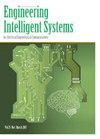Fuzzy model of cutting process on a milling machine
Engineering Intelligent Systems for Electrical Engineering and Communications
Pub Date : 1994-12-01
DOI:10.1049/ISE.1994.0025
引用次数: 7
Abstract
A fuzzy model of the cutting process has been obtained for a vertical milling-machine, adopting a previously used technique (Sugeno-Yasukawa, 1991). The inputs are cutting speed, feed rate, depth of cut, tool diameter, and workpiece hardness, and the output is the result of the three-axis force sensing signal, working directly on the machine tool. The identification approach is a blackbox type, where only a file of I/O data is necessary to construct the model. The fuzzy model consists of a number of IF...THEN rules with fuzzy antecedents and consequents. Five fuzzy models have been generated according to the material type used. The output error and the relative output error have been used as performance indices of the fuzzy models.铣床切削过程的模糊模型
采用先前使用的技术(sugeno - yasawa, 1991),获得了立式铣床切削过程的模糊模型。输入是切削速度、进给速度、切削深度、刀具直径和工件硬度,输出是三轴力传感信号的结果,直接作用于机床。识别方法是一种黑盒类型,其中只需要一个I/O数据文件来构建模型。该模糊模型由多个IF…THEN规则有模糊的前因和结果。根据使用的材料类型,生成了五个模糊模型。以输出误差和相对输出误差作为模糊模型的性能指标。
本文章由计算机程序翻译,如有差异,请以英文原文为准。
求助全文
约1分钟内获得全文
求助全文

 求助内容:
求助内容: 应助结果提醒方式:
应助结果提醒方式:


